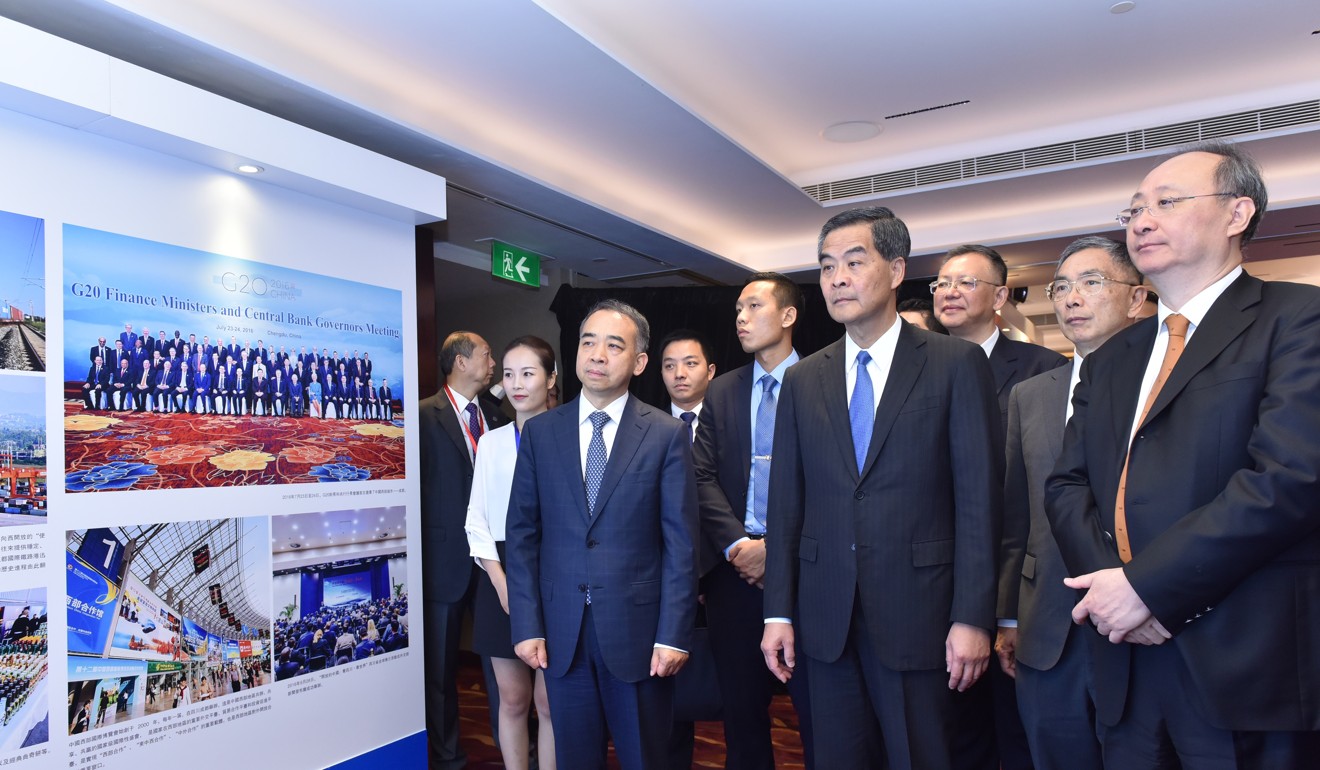
How Hong Kong can help the Greater Bay Area become a landmark in China’s reform process
Xie Feng says Hong Kong has an irreplaceable role in ensuring the Greater Bay Area reaches its full potential, given the many opportunities for cooperation with the mainland and belt and road countries
The Greater Bay Area, which consists of nine cities in Guangdong and the two special administrative regions of Hong Kong and Macau, is among the leaders in China in terms of economic openness and dynamism. Its GDP reached US$1.39 trillion last year, making it the fifth-largest economy in Asia. Its container throughput tops the world, at about 4.5 times that of the New York Bay, San Francisco Bay and Tokyo Bay combined. The Greater Bay Area also houses the headquarters of 17 Fortune 500 companies and four world top 50 universities.
The evolution of the ‘Greater Bay Area’
Hong Kong is China’s most internationalised metropolis. It is also a special administrative region under “one country, two systems”. With its unique advantage of connecting the mainland and the world, Hong Kong will play an irreplaceable role in the building of the Greater Bay Area and will find within it new development opportunities.
Hong Kong-Zhuhai-Macau bridge to enhance Guangdong connections
Technology boost to reinforce Hong Kong’s status as finance and trade centre in bay area plan
Innovation and vision can make Hong Kong shine in the pan-Pearl River Delta
For its part, Guangdong province enjoys a heavily invested research sector, well-developed industrial chain, fully fledged supporting industries in both upstream and downstream sectors, strength in advanced manufacturing, as well as a larger territory.
Guangdong and Hong Kong have a great deal to offer each other.
Guangdong moves into the future as it builds a post-industrial society
The Greater Bay Area will also be a rare opportunity for international investors. In order to become a comprehensive transport and logistical hub for the belt and road, the area needs to enhance regional infrastructure connectivity and upgrade shipping and logistical services. It also needs to attract more innovation resources and promote joint research, so as to serve as an international science and innovation centre. It needs to support industries such as new generation IT, biotech, high-end equipment manufacturing, new materials and creative culture, as it hopes to build a modern industrial system with global competitiveness.
‘Greater Bay Area’ economy could equal that of South Korea
The Greater Bay Area also aims to build a high-quality urban community, for both work and leisure. Thus, it needs greater input in eco-environment, education, health and entertainment services. The economic demands this entails hold huge potential for international investors.
We have already witnessed some good examples of tripartite cooperation. Home appliance giant TCL, with its headquarters and production base in Guangdong, has spread its business overseas through Hong Kong. WeChat operator Tencent became a global player after it listed in Hong Kong. Drone maker Dji, a product of scientific inspiration from Hong Kong, is excelling in the mainland market. These success stories fully demonstrate the bright prospects for mutually beneficial cooperation between Hong Kong and Guangdong.
Can Greater Bay Area rival San Francisco and Tokyo?
In August, the Commissioner’s Office supported Sichuan province in staging a promotional conference in Hong Kong on international cooperation under the belt and road, in order to build a new platform for tripartite cooperation between the mainland, Hong Kong and the belt and road countries. The more than 400 participants at the event included officials from over 30 consulates in Hong Kong, 21 consuls general, heads of more than 10 foreign business chambers, and journalists from over 30 Chinese and foreign media organisations.
The success of the conference marked the first step in our endeavour to boost tripartite cooperation by leveraging diplomatic resources.

Hong Kong hosts 62 consulates general and 61 honorary consulates. It has over 30 foreign business chambers, nearly 8,000 multinationals – about half of them regional headquarters – and several foreign media agencies. We are ready to maintain close communication with both Guangdong and Hong Kong, and work with the foreign consular corps, business chambers, and media agencies based here.
We will make good use of the personnel connections and information resources from over 260 Chinese diplomatic missions across the globe, and promote tripartite cooperation among Guangdong, Hong Kong and belt and road countries to ensure better development of the Greater Bay Area.
The prospects for the Greater Bay Area are good. I hope Hong Kong and international investors will seize the opportunities.
Xie Feng is commissioner of the Ministry of Foreign Affairs of the People’s Republic of China in the Hong Kong Special Administrative Region

